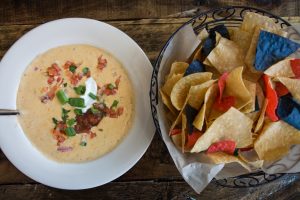My mother guffawed when, at 17, I told her I was in the running for an award from the local chapter of the Daughters of the American Revolution. Teachers did the nominating, and I was happy to be considered. My mother, however, found it hilarious.
If the patriotic women of the D.A.R. were inclined to recognize my good citizenship, that was fine by her. But they needed to understand that my mother’s people were among the musket-firing Redcoats on the other side of that colonial rebellion. Long live the Queen.
A survivor of WWII’s London Blitz, Mom was a staunch supporter of the Crown, even as her U.S. citizenship papers, issued in the 1960s, suggested she switched teams. Only when I was an adult with children of my own did my mother confide that she simply mouthed the part of the U.S. naturalization oath that renounced her fidelity to England. She was sure there’d be trouble from immigration authorities if they knew. Mom had spoken the rest of the oath out loud, so those parts counted. She made peace long ago with two countries laying claim to her heart.
This dichotomy revealed itself during holidays. My mother’s Thanksgiving table featured the requisite Butterball, and her white bread/cornbread/sausage stuffing was good enough to earn the acclaim of her Arkansas sisters-in-law. Their praise gave Mom great pleasure, although she’d deflect the compliments at family gatherings with an airy, “Oh, it’s just something I threw together.” Spoken like a true Southern cook, albeit one who sounded vaguely like Mary Poppins. Side dishes and desserts – that green bean casserole, mashed potatoes, corn, gravy, pie – were all the token ones.
Her Christmas menu looked a lot like Thanksgiving’s, but desserts were solidly English. There was trifle made of sponge cake and strawberries. Mom’s fruitcake, baked a month before and fed with French cognac in the intervening weeks, was encased in marzipan and royal icing, the top decorated with a bucolic country scene. I liked the fruitcake (maybe it was all that cognac) but drew the line at Mom’s beloved dark and bitter plum pudding. The blue flame that appeared when she held a match to it was impressive, though. No one else I knew set fire to their Christmas dessert. Mincemeat tarts completed the feast.
I’ve maintained none of those traditions. I roast two turkey breasts, not a whole bird, since my family prefers white meat. Chicken and cornbread dressing coalesces in a slow-cooker. Green beans simmer with a ham hock in a pot on the stove, next to a small saucepan of make-ahead gravy boosted with turkey drippings. Boiled russets are mashed with butter and cream, and chunks of sweet potatoes bake under a layer of warm spices and brown sugar. Of course, we have pie.
But it’s the sausage rolls on Thanksgiving mornings that bridge decades and cultures. My mother made them for holidays every year. I asked her to show me how when my craving exceeded her supply. In exchange for the recipe, I agreed to make several dozen of them for her to take to that year’s British Wives Club Christmas party. It was a mistake to entrust a sausage roll newbie with that much responsibility. She showed me the technique, and I crafted robust, too-thick sausage rolls that probably didn’t cook all the way through. All I remember is Mom pressing her lips together in a thin line and saying little when I asked afterward how the sausage rolls were received.
Oops.
Many years and hundreds of sausage rolls later, I’ve got this recipe down. A hot fistful of these, accompanied by champagne or a mimosa, with a parade to watch on TV makes me and my very Southern husband very happy. The mashup of cultures seems like a fitting way to commemorate the gratitude of immigrants – whether one or many – who find homes in a strange, new land.
Sausage Rolls
Enough flaky pastry dough to make 1 single crust
1 pound bulk breakfast sausage
Egg wash (1 large egg beaten with 1 teaspoon water)
Preheat the oven to 425°F., and line a large baking sheet with parchment paper.
Roll out pastry in a rectangular shape about 1/8-inch thick on a lightly floured surface. Squeeze chunks of raw sausage into long tubes about the width of your thumb. Place in a line down one side of the pastry. With clean hands, gently roll the sausage-edged pastry over itself, stopping just short of encasing it. With a sharp knife, cut the pastry dough along the side, leaving enough room for pastry edges to overlap slightly. Brush a strip of egg wash down the sausage side of the cut, and roll the pastry completely over, pressing gently to seal the edges together.
Carefully transfer the long roll to the baking sheet, and brush with more egg wash. Make shallow cuts every inch or so along the top of the pastry to vent steam, then slice the roll into pieces about 1 1/2 inches long. Pull apart to separate slightly. Repeat with remaining pastry and sausage.
Bake for about 30 minutes, or until the rolls are golden brown and the sausage is cooked through.
Transfer to a rack to cool for several minutes before serving.
Makes about 26.





